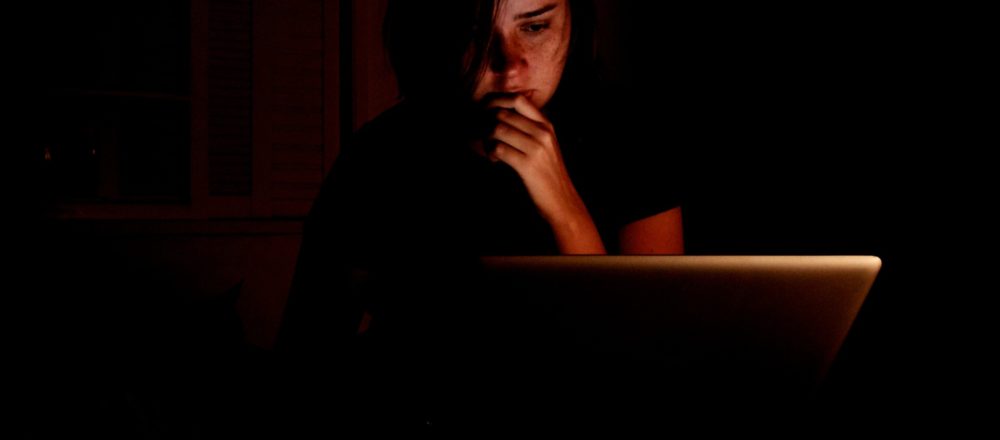In February 2014, Australian television star Charlotte Dawson took her own life after facing well-publicised abuse from Twitter trolls. While Dawson’s motives will ultimately remain unknown, it was reported that the online cruelty she faced may have affected her already fragile emotional state.
In December 2018, Amnesty International released a report titled Troll Patrol. This report (a collaboration with Element AI) concluded that the online abuse of women – abuse which includes trolling – constitutes a human rights violation and has dangerous ramifications for women in both the online and offline worlds.
These two cultural flashpoints were foremost in my mind when I interviewed well-known Canberra journalist Ginger Gorman about her new book, Troll Hunting. The book provides a frank and confronting glimpse into the magnitude of the harm caused by online trolling.
In the broadest sense, trolling involves attempts to incite discord or distress on the internet through inflammatory content or comments.
Gorman investigates the better-known and more insidious forms of trolling, which she calls “predator trolling”. This trolling encompasses comments that aim to offend and degrade their targets, including threats of violence such as death threats. This is the kind of trolling that was faced by Charlotte Dawson in the lead-up to her death (though in her book, Gorman is careful not to attribute the star’s death to online abuse alone).
Gorman’s research has led to her being dubbed a “cyberhate expert”. She greets this label with a level of bemusement. “I never set out to be a cyberhate expert,” she tells me in a phone conversation, “it’s more that it found me”.
In Troll Hunting, Gorman outlines the circumstances through which trolls “found” their way into her life. It began in 2011, when she interviewed a gay couple who had adopted a boy overseas. The piece was meant as a feel-good story, borne out of an anti-homophobic stance.
In 2013, however, it was revealed that the couple were in fact paedophiles who had sexually abused the boy. Gorman then became the target of tweets by users who insisted she knew the couple’s secret, and that she was a “paedophile enabler”. During this episode, she also received misogynist and anti-Semitic abuse, directed at her gender and religious background.
Eighteen months after this episode, Gorman decided to dig deeper into the causes and effects of trolling, a phenomenon that she knew little about prior to being on the receiving end. However, Gorman had been a social justice reporter for years and says that she had “always been really interested in those very dark places and those difficult things in being human”.
Gorman concurs that the predator trolling she writes about is a human rights violation. She tells me that, in researching her book, she kept in mind “LGBTQ people, people of colour, people with disabilities… I was really concerned that their voices were being driven out of [online] spaces by online hate campaigns”.
Research supports Gorman’s concerns. High-profile Muslim women such as Mariam Veiszadeh and Yassmin Abdel-Magied have suffered well publicised online abuse, after expressing their political opinions on Twitter. Amnesty’s Toxic Twitter report (released in March 2018) has documented the hostility that women face on that platform. Gorman tells me that she knows female journalists who have received “death threats, rape threats”.
Gorman also points out that online abuse can precede offline violence. “Extreme cyberhate and predator trolling is linked to terrorism, it’s linked to murder, it’s linked to domestic violence”, she tells me.
As well as chronicling the abuse women have suffered online, Gorman interviewed a number of trolls for her book. How did the trolls she interviewed respond to Troll Hunting? “They are actually really proud of the book”, says Gorman. “I went in [to the interviews] with a radical empathy and I really listened to them. I don’t think we can solve hatred with hatred.”
Gorman concedes that the radical empathy approach is controversial. It may not be an appropriate stance for all journalists to take when writing about this topic. What is clear is that the author’s original approach enabled some frank (albeit disturbing) conversations between herself and her interviewees. These men open up regarding their reasons for trolling, which range from extreme insensitivity to thinly veiled racism and misogyny.
Towards the end of Troll Hunting, Gorman lists some suggestions for responses to predatory trolling. These include the establishment of an “independent statutory body, working with social media companies, but simultaneously holding legal clout”. The establishment of such a body would need to avoid a situation whereby the majority of power goes to social media companies, and internet users (again) lose out.
Gorman also suggests that social media companies should be held more accountable for the management of hate speech that appears on their platforms. In her book, Gorman recounts the frustration she experienced when she tried to get Facebook and Twitter to commit to this accountability.
This lack of accountability might change. In April 2019, the Australian Federal Government swiftly introduced laws that criminalised “internet companies which do not quickly remove ‘abhorrent’ video and images”. These laws were introduced in the wake of the Christchurch shootings, which were livestreamed to Facebook.
The aforementioned laws have been controversial. For example, the Law Council’s Arthur Moses has cautioned that they might “silence and criminalise whistleblowers trying to bring attention to violent atrocities occurring overseas”. Flawed though they may be, though, these laws might force social media companies to more carefully regulate the hate material posted on their platforms.
There are no easy answers when it comes to preventing a multifaceted problem such as online trolling. However, Gorman’s work in Troll Hunting makes an insightful and original contribution to this 21st century social problem.


